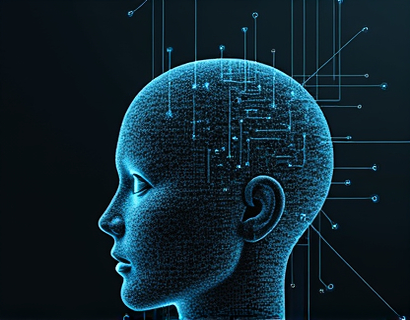Harnessing AI-Powered Chat for Safe and Educational Exploration of Phygital Industry Insights
The integration of Artificial Intelligence (AI) in educational technologies has opened new avenues for safe and enriching learning experiences, particularly in the rapidly evolving field of phygital solutions. This article delves into how AI-powered chat interfaces can serve as a valuable tool for educators, students, and young learners, providing specialized insights into the phygital sector while ensuring content accuracy and safety.
Understanding Phygital Solutions
Phygital, a blend of physical and digital, refers to solutions that merge the tangible world with digital enhancements. This includes augmented reality (AR), virtual reality (VR), and mixed reality (MR) applications that enhance learning, training, and entertainment. As these technologies become more prevalent, there is a growing need for resources that help users, especially the younger generation, understand and explore these innovations safely and educationally.
Role of AI-Powered Chat Interfaces
AI-powered chat interfaces are designed to interact with users in a conversational manner, providing tailored information and guidance. In the context of phygital solutions, such interfaces can deliver specialized insights that are both accurate and age-appropriate. These chatbots can act as virtual guides, answering questions, explaining complex concepts, and offering interactive experiences that complement traditional learning methods.
Ensuring Content Verification and Safety
A critical aspect of using AI in educational settings is ensuring the content is verified for accuracy and safety. This is particularly important when dealing with young learners who may not have the critical thinking skills to discern reliable information. The AI chat interface can be programmed to cross-reference data from trusted sources, ensuring that the information provided is up-to-date and accurate. Additionally, content can be tailored to different age groups, with a child version capable of simplifying complex topics for younger audiences.
Benefits for Educators and Students
For educators, AI-powered chat interfaces offer a powerful tool to enhance lesson plans and provide additional resources. These chatbots can assist in creating interactive and engaging lessons, helping to explain complex concepts in simpler terms. For students, these interfaces provide a safe and controlled environment to explore phygital technologies, fostering curiosity and a deeper understanding of the subject matter.
Interactive Learning Experiences
One of the most significant advantages of AI-powered chat interfaces in the phygital sector is their ability to create interactive learning experiences. Through natural language processing, these chatbots can engage users in conversations, ask questions, and provide immediate feedback. This interactive approach not only makes learning more enjoyable but also helps in retaining information better. For example, a student asking about the principles of AR can receive a step-by-step explanation along with visual examples, enhancing their comprehension.
Real-World Applications and Case Studies
To illustrate the practical applications of AI-powered chat interfaces in phygital education, consider a scenario where a classroom uses a chatbot to explore VR applications in history lessons. Students can ask the chatbot about specific historical events and how VR can bring these events to life. The chatbot can provide detailed explanations, link to relevant resources, and even guide students through a virtual tour of a historical site. This not only enriches the learning experience but also demonstrates the real-world potential of phygital technologies.
Another case study involves a science class using an AI chatbot to explore AR applications in biology. Students can interact with the chatbot to learn about 3D models of cells and organs, asking questions about each component and receiving detailed responses. The chatbot can also suggest hands-on activities, such as creating their own AR models using simple tools, bridging the gap between theory and practice.
Child-Friendly Features and Content Adaptation
To ensure that AI-powered chat interfaces are suitable for children and students, several features must be incorporated. First, the language used should be simple and clear, avoiding jargon and complex terms. The chatbot can be programmed to detect the user's age and adjust the complexity of the content accordingly. Additionally, the interface should include visual aids and interactive elements that cater to different learning styles, making the content more engaging and accessible.
Content adaptation is another crucial aspect. The chatbot can use machine learning algorithms to understand the user's level of knowledge and tailor the responses to their needs. For instance, a younger student asking about drones might receive a basic explanation of how drones work, along with fun facts and simple diagrams. In contrast, an older student might receive a more detailed technical explanation, including information on sensors and programming.
Parental and Teacher Involvement
While AI-powered chat interfaces offer numerous benefits, it is essential to involve parents and teachers in the educational process. These stakeholders can provide valuable insights into the students' learning needs and help monitor the use of these tools. Teachers can integrate chatbot interactions into their lesson plans, using the insights gained to enhance their teaching methods. Parents can also use these chatbots to support their children's learning at home, ensuring a consistent and supportive educational environment.
Future Developments and Trends
The field of AI-powered chat interfaces in phygital education is rapidly evolving, with ongoing advancements in AI technology and educational methodologies. Future developments may include more sophisticated natural language processing, enabling chatbots to understand and respond to more complex queries. Integration with other educational technologies, such as learning management systems (LMS) and educational apps, can create a seamless and comprehensive learning experience.
Moreover, the use of AI in personalizing learning paths based on individual student performance and interests is becoming more prevalent. This personalized approach can help identify areas where students need additional support, allowing for targeted interventions and improved outcomes.
Conclusion
AI-powered chat interfaces represent a promising solution for safe and educational exploration of phygital industry insights. By providing accurate, age-appropriate content and interactive learning experiences, these chatbots can significantly enhance the educational journey of students and young learners. As the phygital sector continues to grow, the role of AI in making these technologies accessible and understandable will become increasingly important, paving the way for a more informed and tech-savvy future generation.










































